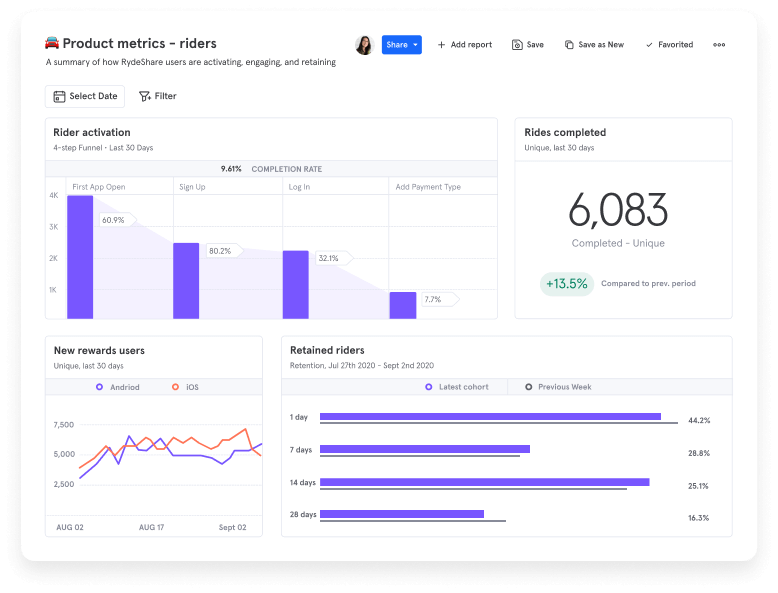In the Novice stage the product analytics maturity, you’re likely measuring a few high-level metrics. You may be focused primarily on traffic, number of sign-ups, total downloads, etc.
The downside is that the questions you’re answering are limited and provide an incomplete understanding of their product and users. To carry the exercise metaphor: you’ve purchased the dumbbells and started your first set of curls. You can only do so many.
If you’re in this stage, the good news is that you’re committed to using data to some extent to guide your product — if only in response to something breaking.

This is a starting point for companies that are new to data adoption.
Using data, even generic data, to influence product development will benefit your company. But there are limitations to being in this stage.

Explore Mixpanel
See how product and growth teams use Mixpanel’s powerful reports to answer any question.
Try It With Sample DataCommon markers of Novice Stage
Comfortable with Google Analytics or other marketing analytics tools, many businesses try to hack a product solution to understand product usage. They confuse product analytics with marketing analytics. Additionally, many companies may have a product analytics tool but aren’t using it to its fullest potential. This often results in high-level tracking of only a few key default actions (events), primarily around main product lifecycle milestones, traffic, number of sign-ups, total logins, and so on — resulting in data that doesn’t drive value.
Example of Novice
product analytics maturity
Questions you can answer
Marketing analytics tell only the first part of the story: the traffic to your product and where users come from. Other questions you might ask in the Novice stage include:
- What’s my conversion rate to the product?
- What acquisition channels are driving traffic?
- What pages have the highest views?
- What’s my overall traffic?
Marketing analytics help you understand how you attract and convert customers. Product analytics solutions help you understand how users engage with your product and what makes them retain.
For Example
In the Novice stage, the ridesharing startup has launched its product and has decided to track certain metrics. They know they should be keeping track of various custom events, though they may not know which are most important.
Their software tells them that most people log into their app on weekends, and that most customers come from their referral network.
They know some numbers (total signups and new users as of this week), but the data they have isn’t affecting product development. It’s simply informing them after the fact.
How to move on from Novice
It can be hard to break out of the Novice stage because you’re not sure where you’re going. You may be tracking only a few events and therefore you don’t have what you need to make informed decisions moving forward.
Plenty of teams have data available. But they’re not asking sophisticated questions of that data, they’re not tracking the right things to move forward, or the data they’re tracking is incomplete.
This can lead to gradual but slow growth (best case scenario) or poor product decisions (worst case scenario).
To keep maturing, determine what metrics are most important to your growth. Ask follow-up questions of your analysis: Why are users dropping off? Who are my power users? What causes users to stick around?
If you found out that most users sign up on weekends, find out how this varies by city or what time of day has the highest spike. Being curious and asking more of your data will help you advance.
![pas-img03[1]](https://mixpanel.com/wp-content/uploads/2020/11/pas-img031-1.png)